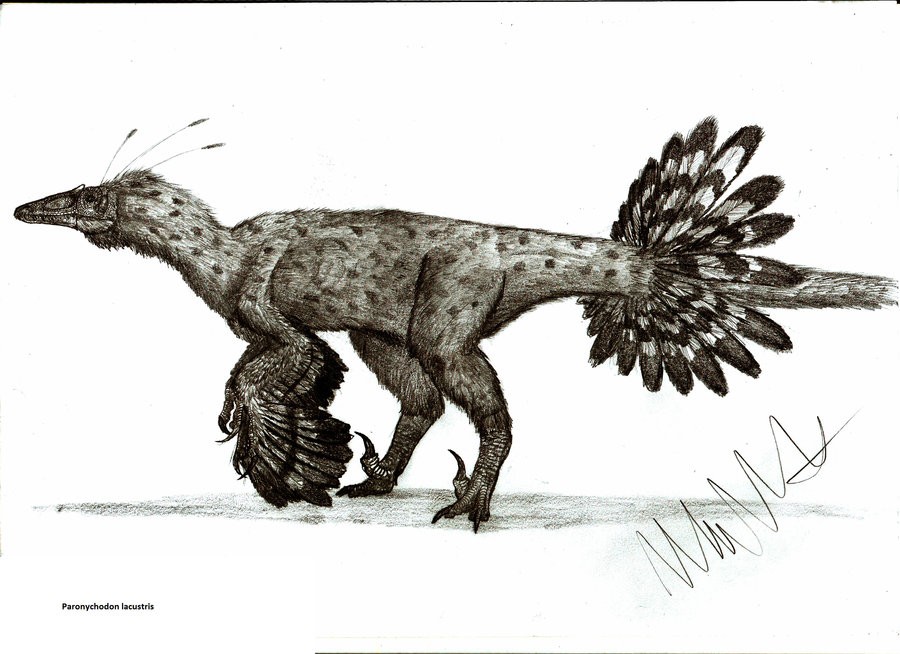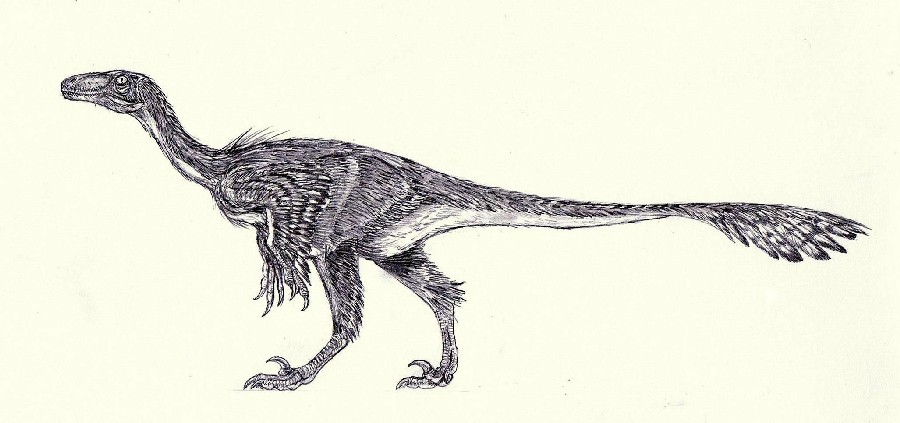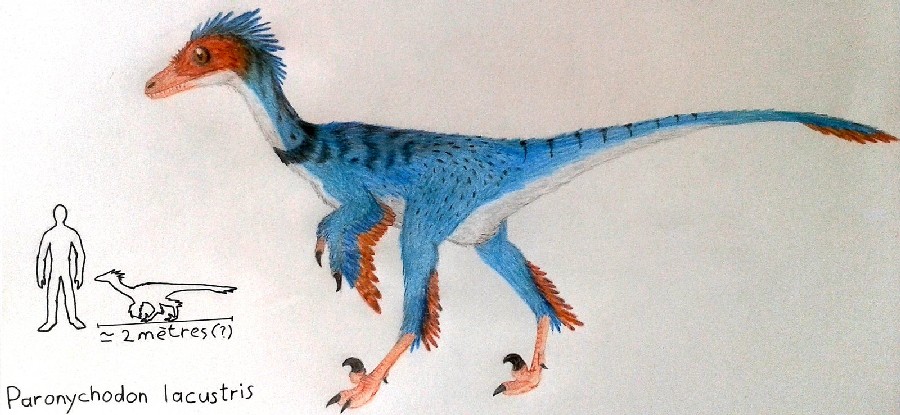База данных динозавров:
Общее количество образцов: 1365| name | Paronychodon |
| period | Cretaceous (Меловой период) |
| period_mya | 66 |
| date_from | Kimmeridgian Age (Киммериджский ярус) |
| date_to | Cretaceous Period (Меловой период) |
| date_from2 | 157.3 |
| date_to2 | 66 |
| lived_in | a terrestrial habitat (наземная среда обитания) |
| was_a | carnivore (хищники) |
| reproduced_by | laying eggs (откладывание яиц) |
| url | https://dinosaurpictures.org/Paronychodon-pictures |
| articles | J. D. Archibald and W. A. Clemens. 1984. Mammal evolution near the Cretaceous-Tertiary Boundary. In W. A. Berggren, J. A. Van Couvering (eds.), Catastrophes and Earth History: The New Uniformitarianism D. B. Brinkman. 1990. Paleontology of the Judith River Formation (Campanian) of Dinosaur National Park, Alberta, Canada: evidence from vertebrate microfossil locality. Palaeogeography, Palaeoclimatology, Palaeoecology 78:37-54 V. Codrea and M. Vremir. 2010. More than just Nopcsa's Transylvanian dinosaurs: A look outside the Hateg Basin. Palaeogeography, Palaeoclimatology, Palaeoecology 293:391-405 D. L. Lofgren. 1995. The Bug Creek problem and the Cretaceous-Tertiary transition at McGuire Creek, Montana. University of California Publications in Geological Sciences 140:1-185 D. B. Brinkman. 1986. Microvertebrate sites: progress and prospectus. In B. G. Naylor (ed.), Field Trip Guidebook to Dinosaur Provincial Park, 2 June 1986. Dinosaur Systematics Symposium, Tyrrell Museum of Palaeontology, Drumheller, Alberta J. Peng and A. P. Russell. 2001. Vertebrate microsite assemblages (exclusive of mammals) from the Foremost and Oldman Formations of the Judith River Group (Campanian) of southeastern Alberta: an illustrated guide. Provincial Museum of Alberta, Natural History Occasional Paper 25:1-54 J. D. Gardner. 2000. Albanerpetontid amphibians from the Upper Cretaceous (Campanian and Maastrichtian) of North America. Geodiversitas 22(3):349-388 D. B. Brinkman and M. J. Ryan. 1998. The paleogeographic and stratigraphic distribution of ceratopsids (Ornithischia) in the Upper Judith River Group of western Canada. Palaios 13:160-169 J. A. Lillegraven and J. J. Eberle. 1999. Vertebrate faunal changes through Lancian and Puercan time in southern Wyoming. Journal of Paleontology 73(4):691-710 T. S. Kelly. 2014. Preliminary report on the mammals form Lane's Little Jaw Site Quarry: a latest Cretaceous (earliest Puercan?) local fauna, Hell Creek Formation, southeastern Montana. Paludicola 10(1):50-91 H. M. Avrahami and T. A. Gates. 2018. A new microvertebrate assemblage from the Mussentuchit Member, Cedar Mountain Formation: insights into the paleobiodiversity and paleobiogeography of early Late Cretaceous ecosystems in western North America. PeerJ J. P. Hunter and D. A. Pearson. 1996. First record of Lancian (Late Cretaceous) mammals from the Hell Creek Formation of southwestern North Dakota, USA. Cretaceous Research 17 R. M. Sullivan and S. E. Jasinski. 2012. Re-assessment of Late Campanian (Kirtlandian) turtles from the Upper Cretaceous Fruitland and Kirtland formations, San Juan Basin, New Mexico, USA. In D. B. Brinkman, P. A. Holroyd, J. D. Gardner (eds.), Morphology and Evolution of Turtles M. E. Nelson and J. H. Madsen. 1985. Early Cretaceous mammals from central Utah. Geological Society of America, Rocky Mountain Section, Abstracts with Programs 17(4):258 R. Estes. 1964. Fossil vertebrates from the Late Cretaceous Lance Formation, eastern Wyoming. University of California Publications in Geological Sciences 49:1-187 B. Krebs. 1995. The Barremian vertebrate locality Uña (province of Cuenca) materials for a comparison with Las Hoyas. II International Symposium on Lithographic Limestones, Extended Abstracts. Ediciones de la Universidad Autónoma de Madrid C. Brauckmann. 1978. Beitrag zur Flora der Grube Guimarota (Ober-Jura; Mittel-Portugal). Geologica et Palaeontologica 12:213-222 J. I. Canudo and L. Ardévol. 1999. New dinosaur localities near the Cretaceous/Tertiary boundary from Arén (Huesca, Spain). In J. I. Canudo & G. Cuenca-Bescós (eds.), IV European Workshop on Vertebrate Paleontology, Albarracin, Spain. Universidad de Zaragoza J. R. Garrison, Jr. and D. B. Brinkman. 2007. A multidisciplinary study of the Lower Cretaceous Cedar Mountain Formation, Mussentuchit Wash, Utah: a determination of the paleoenvironment and paleoecology of the Eolambia caroljonesa dinosaur quarry. Cretaceous Research 28:461-494 T. E. Williamson and S. L. Brusatte. 2014. Small theropod teeth from the Late Cretaceous of the San Juan Basin, northwestern New Mexico and their implications for understanding latest Cretaceous dinosaur evolution. PLoS ONE 9(4):e93190:1-23 M. J. Ryan and P. J. Currie. 2000. Baby hadrosaurid material associated with an unusually high abundance of Troodon teeth from the Horseshoe Canyon Formation, Upper Cretaceous, Alberta, Cananda. Gaia 15:123-133 W. A. Clemens. 1964. Fossil mammals of the type Lance Formation, Wyoming. Part I. Introduction and Marsupialia. University of California Publications in Geological Sciences 48:1-105 A. O. Averianov and A. V. Voronkevich. 2002. A sauropod foot from the Early Cretaceous of western Siberia, Russia. Acta Palaeontologica Polonica 47(1):117-124 E. Buffetaut and B. Marandat. 1986. Découverte de dents de deinonychosaures (Saurischia, Theropoda) dans le Crétacé superieur du Sud de la France [Discovery of deinonychosaur teeth (Saurischia, Theropoda) in the Upper Cretaceous of southern France]. Comptes Rendus de l'Académie des Sciences à Paris, Série II 303:1393-1396 L. E. Wilson. 2008. Comparative taphonomy and paleoecological reconstruction of two microvertebrate accumulations from the Late Cretaceous Hell Creek Formation (Maastrichtian), eastern Montana. Palaios 23:289-297 R. Estes. 1965. A new fossil salamander from Montana and Wyoming. Copeia 1965(1):90-95 J. L. Whitmore and J. E. Martin. 1986. Vertebrate fossils from the Greasewood Creek locality in the Late Cretaceous Lance Formation of Niobrara County, Wyoming. Proceedings of the South Dakota Academy of Sciences 65:33-50 B. H. Breithaupt. 1982. Paleontology and paleoecology of the Lance Formation (Maastrichtian), east flank of Rock Springs Uplift, Sweetwater County, Wyoming. Contributions to Geology, University of Wyoming 21(2):123-151 J. G. Armstrong-Ziegler. 1978. An aniliid snake and associated vertebrates from the Campanian of New Mexico. Journal of Paleontology 52(2):480-483 D. W. Larson and D. B. Brinkman. 2010. Faunal assemblages from the upper Horseshoe Canyon Formation, an early Maastrichtian cool-climate assemblage from Alberta, with special reference to the Albertosaurus sarcophagus bonebed. Canadian Journal of Earth Sciences 47:1159-1181 L. A. Nessov. 1985. Redkie kostnye ryby, nazemiye yashcheritsy i mlekopitayushchie zony limanov i primorskikh nizmennostey mela Kyzylkumov [Rare bony fishes, terrestrial lizards, and mammals in the estuarine and coastal lowland zone of the Kyzyl-Kum Cretaceous]. Yearbook of the All-Union Paleontological Association 28:199-219 D. A. Pearson and T. Schaefer. 2002. Vertebrate biostratigraphy of the Hell Creek Formation in southwestern North Dakota and northwestern South Dakota. In J. H. Hartman, J. R. Johnson, and D. J. Nichols (eds.), The Hell Creek Formation and the Cretaceous-Tertiary Boundary in the Northern Great Plains: An Integrated Continental Record of the End of the Cretaceous, Geological Society of America Special Paper 361:145-167 D. J. Varricchio. 2001. Late Cretaceous oviraptorosaur (Theropoda) dinosaurs from Montana. D. H. Tanke and K. Carpenter (eds.), Mesozoic Vertebrate Life, Indiana University Press, Bloomington V. Codrea and T. Smith. 2002. Dinosaur egg nests, mammals and other vertebrates from a new Maastrichtian site of the Hateg Basin (Romania). Comptes Rendus Palevol 1(3):173-180 M. T. Greenwald. 1971. The Lower Vertebrates of the Hell Creek Formation, Harding County, South Dakota R. S. Lull. 1915. The mammals and horned dinosaurs of the Lance Formation of Niobrara County, Wyoming. The American Journal of Science, series 4 40(238):319-348 J. D. Archibald. 1982. A study of Mammalia and geology across the Cretaceous-Tertiary boundary in Garfield County, Montana. University of California Publications in Geological Sciences 122:1-286 J. R. Horner and P. J. Currie. 1994. Embryonic and neonatal morphology and ontogeny of a new species of Hypacrosaurus (Ornithischia, Lambeosauridae) from Montana and Alberta. In K. Carpenter, K. F. Hirsch, and J. R. Horner (eds.), Dinosaur Eggs and Babies, Cambridge University Press, Cambridge J. T. Sankey and B. R. Standhardt. 2005. Theropod teeth from the Upper Cretaceous (Campanian-Maastrichtian), Big Bed National Park, Texas. In K. Carpenter (ed.), The Carnivorous Dinosaurs. Indiana University Press, Bloomington A. E. Wood and J. B. S. Ormsbee. 1954. Notes on mammals from the Upper Cretaceous Lance Formation of Wyoming. Journal of Paleontology 28(1):26-31 J. I. Ruiz-Omeñaca and J. I. Canudo. 1997. Primera evidencia de un área de alimentación de dinosaurios herbívoros en el Cretácico Inferior de España (Teruel) [First evidence of a feeding area of herbivorous dinosaurs in the Lower Cretaceous of Spain (Teruel)]. Monografias de la Academia de Ciencias Exactas, Fisicas, Quimicas y Naturales de Zaragoza 10:1-48 B. S. Kues and J. W. Froehlich. 1977. Paleontological survey, resource assessment, and mitigation plan for the Bisti-Star Lake Area, northwestern New Mexico. Report to the Bureau of Land Management, Albuquerque, New Mexico J. A. Lillegraven and M. C. McKenna. 1986. Fossil mammals from the "Mesaverde" Formation (Late Cretaceous, Judithian) of the Bighorn and Wind River basins, Wyoming, with definitions of Late Cretaceous North American Land-Mammal "Ages". American Museum Novitates 2840:1-68 A. Sahni. 1972. The vertebrate fauna of the Judith River Formation, Montana. Bulletin of the American Museum of Natural History 147(6):321-412 J. J. Eberle and J. A. Lillegraven. 1998. A new important record of earliest Cenozoic mammalian history: geologic setting, Multituberculata, and Peradectia. Rocky Mountain Geology 33(1):3-47 |
| trophic_level | carnivore (хищники) |
| habitat | terrestrial habitat (наземные среды обитания) |
| motility | actively mobile (подвижный) |
| points | 47.8 -106.1, 43.2 -107.1, 47.8082 -109.59, 42.8544 -107.278, 43.1833 -104.533, 47.6167 -107.317, 41.5683 -108.668, 47.8 -106.1, 43.15 -104.567, 47.5667 -107.1, 47.5667 -107.1, 45.5 -103.1, 41.9399 -106.876, 47.5167 -106.4, 43.3 -104.367, 43.1653 -104.569, 43.1289 -104.495, 47.5167 -107.183, 47.65 -106.2, 47.0667 -106.917, 43.1163 -104.637, 43.1882 -104.459, 46.1 -103.3, 47.8 -106.1, 47.6167 -106.183, 47.6167 -106.183, 47.6167 -106.183, 47.6 -106.267, 39.0515 -111.038, 50.7548 -111.399, 50.7813 -111.326, 50.7499 -111.515, 39.7 -8.8, 45.58 22.93, 45.5667 22.8833, 36.4861 -108.486, 36.4861 -108.514, 45.9488 -103.962, 45.9488 -103.962, 45.9777 -103.754, 46.0264 -103.767, 46.0264 -103.767, 46.0264 -103.767, 46.4064 -103.94, 46.4498 -104.023, 46.334 -103.898, 46.334 -103.898, 50.7524 -111.512, 50.7483 -111.51, 50.7477 -111.502, 46.4643 -104.002, 45.939 -103.946, 42.2667 0.73333, 50.0687 -111.139, 49.1277 -110.872, 49.1 -110.94, 49.082 -110.84, 49.0755 -110.684, 49.0776 -110.684, 49.1591 -110.722, 49.138 -110.848, 49.1618 -110.719, 49.0763 -110.701, 49.0763 -110.701, 49.0758 -110.703, 49.0726 -110.659, 50.7914 -111.624, 50.7554 -111.531, 50.8291 -111.322, 50.8121 -111.578, 50.7503 -111.475, 49.2831 -112.2, 56.5272 91.8136, 40.95 -0.766667, 36.2857 -108.245, 43.2667 -104.65, 42.1173 62.6553, 43.47 5.71778, 48.9355 -112.642, 51.5389 -112.879, 40.2236 -1.97944, 50.7577 -111.371, 51.4388 -110.386, 51.4361 -110.386, 51.4667 -110.388, 50.73 -110.089, 50.7729 -111.458, 50.7548 -111.514, 29.3006 -103.516, 41.8 -107, 38.6902 -111.262, 41.9399 -106.876, 41.9352 -106.881, 41.9399 -106.876, 47.6139 -106.897, 47.6139 -106.897, 51.9958 -112.883, 36.29 -108.54, 36.3 -108.2, 45.66 -105.08, 45.6442 -103.488, 38.151 -109.598, |


